Te Sun
Efficient State Representation Learning for Dynamic Robotic Scenarios
Sep 17, 2021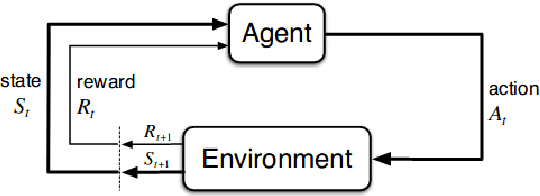
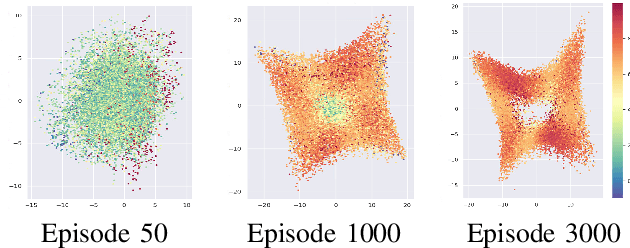
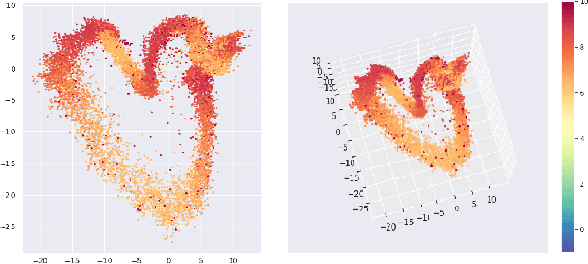
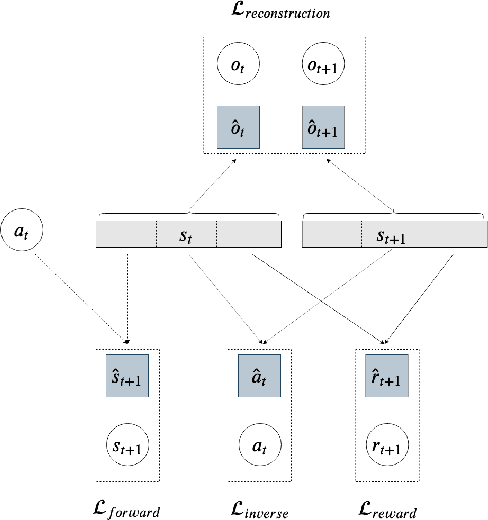
Abstract:While the rapid progress of deep learning fuels end-to-end reinforcement learning (RL), direct application, especially in high-dimensional space like robotic scenarios still suffers from high sample efficiency. Therefore State Representation Learning (SRL) is proposed to specifically learn to encode task-relevant features from complex sensory data into low-dimensional states. However, the pervasive implementation of SRL is usually conducted by a decoupling strategy in which the observation-state mapping is learned separately, which is prone to over-fit. To handle such problem, we present a new algorithm called Policy Optimization via Abstract Representation which integrates SRL into the original RL scale. Firstly, We engage RL loss to assist in updating SRL model so that the states can evolve to meet the demand of reinforcement learning and maintain a good physical interpretation. Secondly, we introduce a dynamic parameter adjustment mechanism so that both models can efficiently adapt to each other. Thirdly, we introduce a new prior called domain resemblance to leverage expert demonstration to train the SRL model. Finally, we provide a real-time access by state graph to monitor the course of learning. Results show that our algorithm outperforms the PPO baselines and decoupling strategies in terms of sample efficiency and final rewards. Thus our model can efficiently deal with tasks in high dimensions and facilitate training real-life robots directly from scratch.
Exploration-efficient Deep Reinforcement Learning with Demonstration Guidance for Robot Control
Feb 27, 2020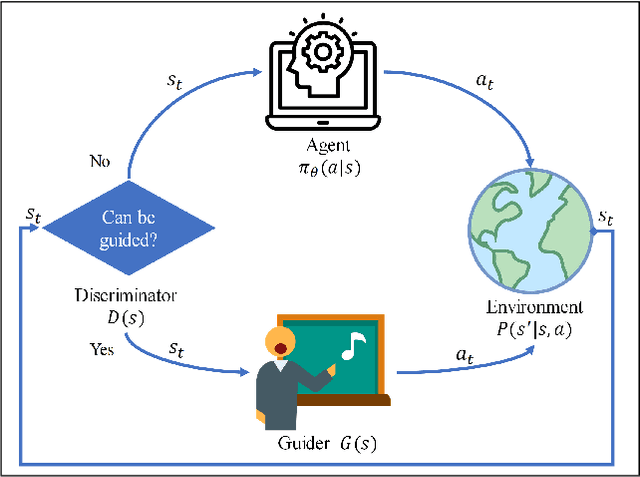



Abstract:Although deep reinforcement learning (DRL) algorithms have made important achievements in many control tasks, they still suffer from the problems of sample inefficiency and unstable training process, which are usually caused by sparse rewards. Recently, some reinforcement learning from demonstration (RLfD) methods have shown to be promising in overcoming these problems. However, they usually require considerable demonstrations. In order to tackle these challenges, on the basis of the SAC algorithm we propose a sample efficient DRL-EG (DRL with efficient guidance) algorithm, in which a discriminator D(s) and a guider G(s) are modeled by a small number of expert demonstrations. The discriminator will determine the appropriate guidance states and the guider will guide agents to better exploration in the training phase. Empirical evaluation results from several continuous control tasks verify the effectiveness and performance improvements of our method over other RL and RLfD counterparts. Experiments results also show that DRL-EG can help the agent to escape from a local optimum.
DisCoRL: Continual Reinforcement Learning via Policy Distillation
Jul 11, 2019


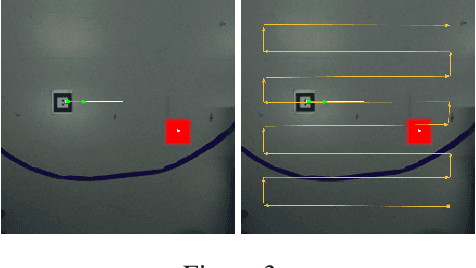
Abstract:In multi-task reinforcement learning there are two main challenges: at training time, the ability to learn different policies with a single model; at test time, inferring which of those policies applying without an external signal. In the case of continual reinforcement learning a third challenge arises: learning tasks sequentially without forgetting the previous ones. In this paper, we tackle these challenges by proposing DisCoRL, an approach combining state representation learning and policy distillation. We experiment on a sequence of three simulated 2D navigation tasks with a 3 wheel omni-directional robot. Moreover, we tested our approach's robustness by transferring the final policy into a real life setting. The policy can solve all tasks and automatically infer which one to run.
Continual Reinforcement Learning deployed in Real-life using Policy Distillation and Sim2Real Transfer
Jun 11, 2019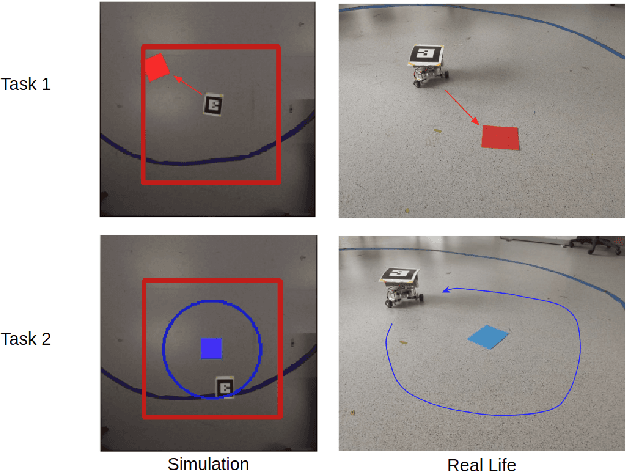

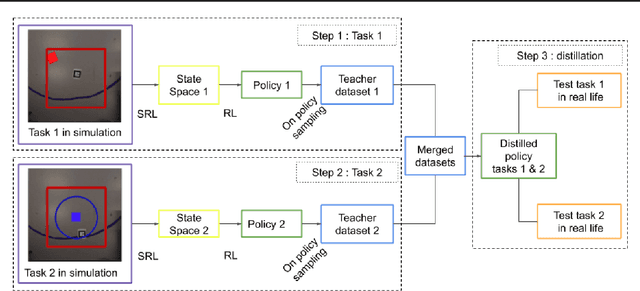

Abstract:We focus on the problem of teaching a robot to solve tasks presented sequentially, i.e., in a continual learning scenario. The robot should be able to solve all tasks it has encountered, without forgetting past tasks. We provide preliminary work on applying Reinforcement Learning to such setting, on 2D navigation tasks for a 3 wheel omni-directional robot. Our approach takes advantage of state representation learning and policy distillation. Policies are trained using learned features as input, rather than raw observations, allowing better sample efficiency. Policy distillation is used to combine multiple policies into a single one that solves all encountered tasks.
 Add to Chrome
Add to Chrome Add to Firefox
Add to Firefox Add to Edge
Add to Edge